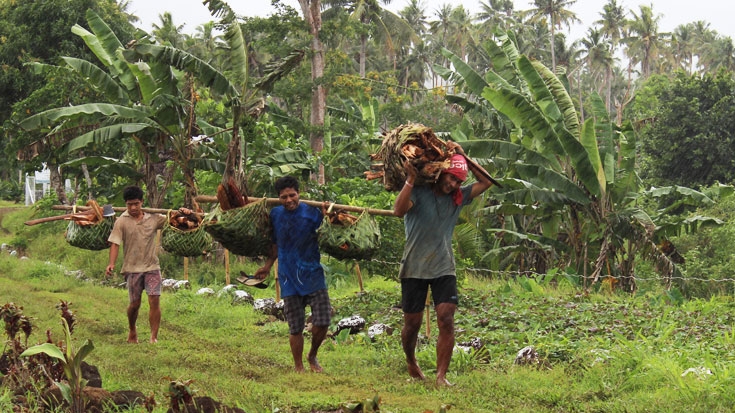Overview
Agriculture plays a critical role in the Samoan economy, employing around two-thirds of the national labor force and supporting 18,000 rural households. Despite strong economic performance, gaps in income have grown between the urban and rural populations. In part, this is due to the poor performance of the agriculture sector. Dependence on food imports has also been increasing, making Samoa more vulnerable to global food and oil price volatility.
Through targeted support to livestock and fruit and vegetable sectors, the Samoa Agriculture Competitiveness Project aims to ensure local produce captures a growing proportion of the domestic food market, and rural household incomes are increased.
In doing so, the project will help narrow the gap between rural and urban incomes, and boost Samoa's foreign exchange reserves through food import substitution and increased exports.
Challenge
While successive Samoa Development Strategies (2003-2007 and 2008-2012) promote agriculture through market-oriented strategies, both public and private investment over the past decade has been low. Only one quarter of rural households are engaged in formal markets, and access to agricultural credit is also difficult. Lending products are often inappropriate for agriculture and interest rates are high, constraining on-farm investment. Finally, Samoa has still to develop effective farm support services, including market driven research and extension to promote improved technologies. Farmer access to improved breeding stock and planting material is limited.
Approach
- Component 1: Livestock Production and Marketing. This will work to promote superior breeds of livestock, improved husbandry practices and stock management, productivity enhancing on-farm investments, while improving the quality of meat sold in local markets.
- Component 2: Fruit and Vegetable Production and Marketing. This will enable interested fruit and vegetable growers to access new, higher yielding varieties, adopt improved technology and production techniques, make productivity enhancing on-farm investments, and organize themselves to strengthen their presence in the market and meet the demands of local retailers and foodservice operators for year-round supplies of fresh fruits and vegetables.
- Component 3: Institutional Strengthening. This will improve the effectiveness of agricultural institutions (government and non-government) providing extension and adaptive research services to Samoan farmers; and the ability of these same institutions working individually or in collaboration to implement and monitor the project.
Locations
The project will be implemented over a period of five years, at polu and Savai'I islands, benefitting more than 2,000 farmers.
Bank Contribution
The project will be financed by an IDA Specific Investment Credit equivalent to US$8 million and co-financed by a US$5 million grant from the Food Price Crisis Response Core Multidonor Trust Fund managed by the World Bank.
Partners
The Ministry of Agriculture and Fisheries of Samoa.
Toward the Future
The project contributes to Samoa's objective of increased food and income security by 2015 and specifically to the agriculture sector policy objectives to improve self-reliance in food production and nutritional security. The project will also help the country enhance private sector capacity in improving productivity, value adding and marketing.

